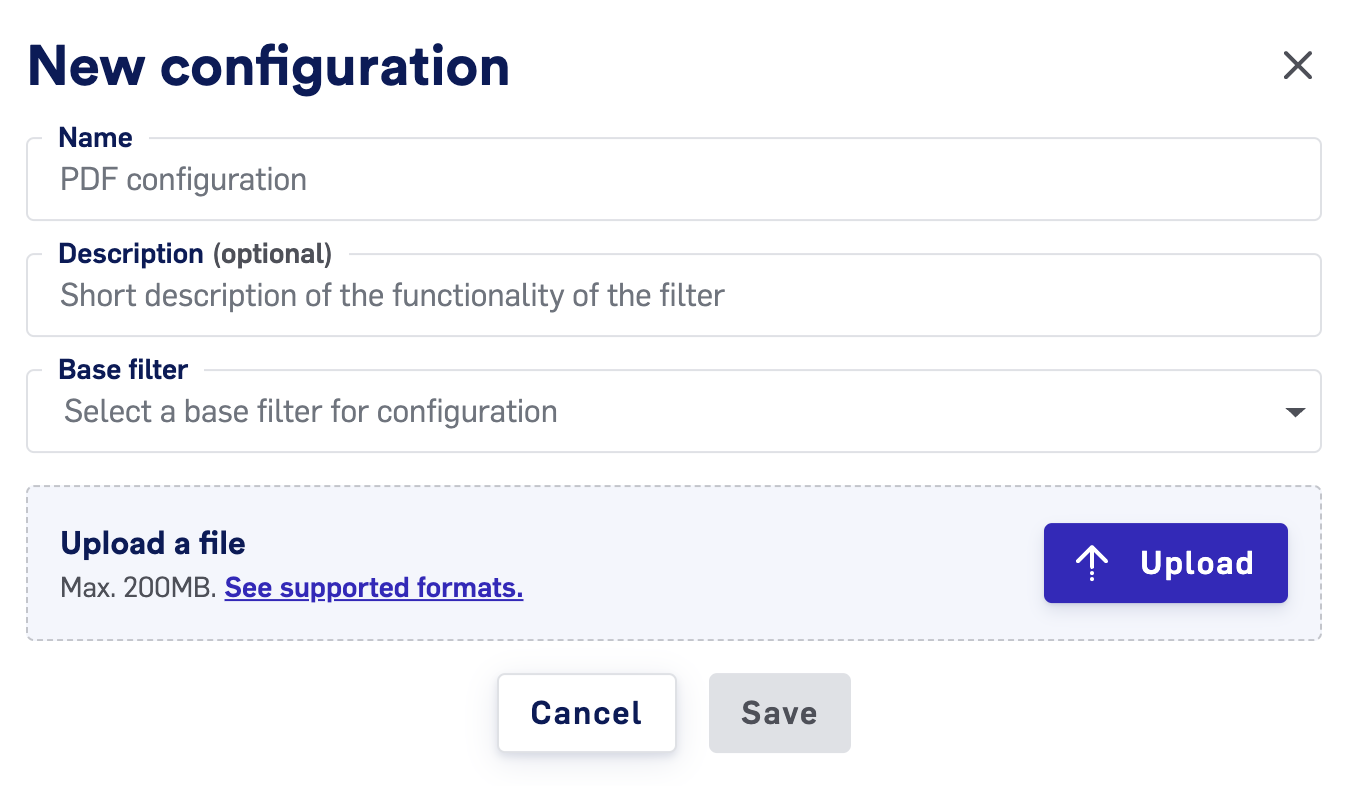Skip to main contentOverview
LILT’s custom file loader feature allows managers and administrators to upload, apply, and manage organization-specific file loaders for translation workflows. This guide outlines the procedures for utilizing custom file loaders within the LILT platform, ensuring a tailored translation process that fits your organization’s needs.
Note: Loaders are commonly referred to as filters in localization. They function in a similar manner.
Uploading a Custom File Loader
Accessing the Custom File Processing Interface
- Navigate to the LILT dashboard.
- Click on “Manage” in the navigation bar.
- Select “File loaders”.
Creating a New File Loader Configuration
- Click the “New configuration” button.
- Fill in the following fields:
- Name: Enter a distinctive name for the file loader.
- Description: Provide a brief description of the loader’s functionality
- Base loader (filter): Select an existing base loader as a foundation for the new configuration, if needed.
Uploading the Configuration File
- Under “Upload a file”, click “Upload”.
- Choose the appropriate configuration file from your device (maximum size 200MB).
Note: The platform supports a variety of file formats. Ensure your file meets the required specifications by checking “See supported formats.”
Selecting a File Loader for Translation
Applying a Custom File Loader During Translation
- When sending a file for translation, select the “Translate” tab.
- Go through the Translation workflow and click “Upload” to choose the file to be translated.
- The system will automatically detect the file type and suggest a corresponding file loader.
- If necessary, you can override the suggested file loader by selecting “Change File Filter” from the dropdown list.
Applying a Custom File Loader after Pre-processing
If a job was created with an unprocessable file by default and needed pre-processing, File Loaders can be set and applied while pre-processing documents.
-
After a job is created with a pre-processing stage, download and process the files offline.
-
Once your files have been processed, upload back to the LILT platform in the Source Files section.
-
To apply a file loader, click on “Change file loader” and select one of your configured file loaders. If a default file loader was set for the detected file type, it will be automatically chosen. If none is chosen, LILT’s platform file loader will be applied.

Setting and Using Default Loaders
- If a default file loader is set for the detected file type, it will be automatically chosen. If none is chosen, LILT’s platform file loader will be applied.
- To change the loader, click on the dropdown list and select an alternative loader.
- If no default is set, the dropdown will display an empty state.
- It is optional to have a loader designated as Default.
Managing Custom File Loaders
Accessing File loader Management
- Under “Manage” on the LILT dashboard, access “File Loaders”.
Managing Existing Loaders
- To delete a loader, locate the loader and select the delete option. Deleted loaders will no longer appear in the dropdown.
- To set or change a default file loader, select the appropriate option from the loader’s settings.
Default System Behavior
If no custom file loader is selected, LILT will continue to use the Okapi default loader as per the existing behavior.
Important Considerations
- Deleted loaders cannot be recovered.
- The ability to upload and manage file loaders is limited to users with manager or administrator roles.
- Ensure that the configuration file complies with LILT’s format requirements to avoid upload errors.
- For assistance or troubleshooting, contact LILT support.




